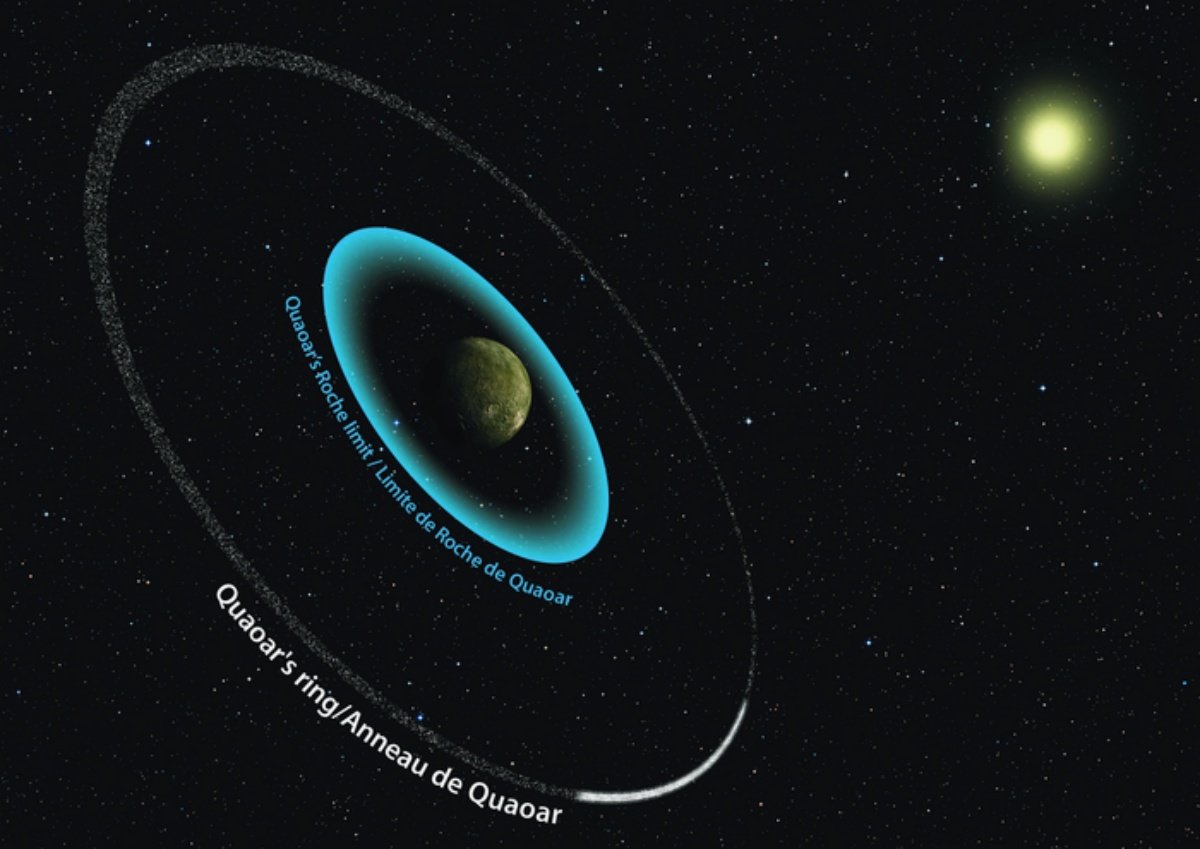A ring discovered around the planet Quaoar could change what astronomers know about these celestial structures. More than 4,000 kilometers away, the planet and its ring defy a 19th-century law of astrophysics.
The research was led by Professor Bruno Morgado from UFRJ (Federal University of Rio de Janeiro) and involved 59 scientists from all over the world, including from Unesp (Paulista State University). The discovery was published in the scientific journal Nature.
Quaoar is a trans-Neptune dwarf planet – that is, beyond Neptune’s orbit – with a radius of only 555 kilometers. The discovered ring is 4,100 kilometers from the planet and violates the Roche Limit, a fundamental rule of astronomy.
This theory defines 1,780 kilometers as the limit distance for a planet to have a solid and undisturbed natural satellite, such as the moon, or a ring of fragmented particles in its orbit.
The new discovery challenges this limit set in the 19th century by French astronomer Édouard Roche. Now, scientists must reexamine this limit and theories of ring formation orbiting other celestial bodies.

“We have data showing it’s there. But why is this material in a ring shape? Why didn’t it join a satellite? These are the next questions we have to answer,” the co-author says. Professor Rafael Sfair from Unesp in an interview with Agência Bori.
What are trans-Neptune objects?
Before 2013, scientists were unaware of the existence of rings in celestial bodies other than planets. This year, however, the asteroid Chariklo surprised astronomers by displaying fragmented disks around it.
They have now been found on Quaoar, which joins Haumea in the ringed dwarf planet group. Both are classified as trans-Neptune because they are located beyond Neptune’s orbit in a region called the Kuiper Belt.
Researchers are increasingly interested in this region filled with little-studied bodies that can answer many of the questions we have today, but unknown due to the great distances separating us.
“Trans-Neptunian objects are remnants of the Solar System’s formation process. Understanding these objects helps to understand how the Solar System evolved. In that sense, they are primitive objects,” says Professor Sfair.
Source: Tec Mundo
I’m Blaine Morgan, an experienced journalist and writer with over 8 years of experience in the tech industry. My expertise lies in writing about technology news and trends, covering everything from cutting-edge gadgets to emerging software developments. I’ve written for several leading publications including Gadget Onus where I am an author.













